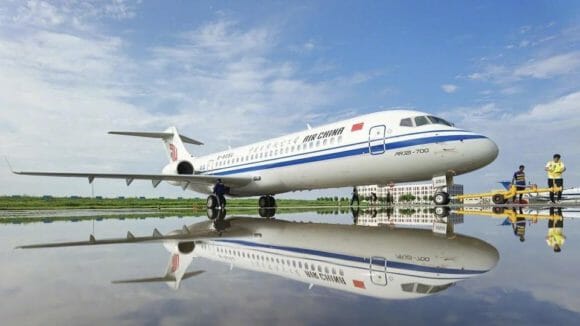Mitsubishi recently announced the fourth delay to the MRJ program, EIS is now schedule for the second quarter of 2018. Since the initial three flights in November and, despite a resumption of flights last week, the company decided not to bring the aircraft to the Singapore Air Show.
The MRJ90, the first model scheduled for service, accomplished three test flights in November before the first flight test aircraft (FTA-1) was grounded to undergo structural strengthening and systems changes. While the design’s basic characteristics and functionality were validated, Mitsubishi discovered that additional strengthening would be needed to correct a weakness discovered in the static test program. Additional “plates” have been introduced to reinforce the airframe to wing attachment and wing box area, and should enable the aircraft to meet the 150% load requirements for certification.

Progress on the Flight Test Fleet
At the same time, the company is implementing changes in software to the avionics, engines, and flight control systems. These systems typically evolve through several software iterations during the development of a new aircraft.
Mitsubishi is currently completing FTA-2, and is performing functional testing on the third aircraft, FTA-3. Interiors and final systems components are currently being installed on FTA-4 and FTA-5, each of which will join the flight test fleet during 2016. Two static test airframes are under construction and will be used for static and fatigue-strength tests.
The latest schedule revision provides for additional flight testing and joint engineering with US partners to ensure a “better-integrated” aircraft. These tasks have been integrated into the test flight schedules, both at Moses Lake, Washington and in Japan.
Potential Further Delay?
Interestingly, MITAC’s Vice President and Executive Chief Engineer Nobuo Kishi, also stated that the MRJ’s landing gear and wheels need to be redesigned to improve safety. Typically, a landing gear redesign would require a more lengthy delay than the one-year delay announced, leading us to question whether an additional fifth delay may become necessary for the MRJ program.
Bottom Line
The performance of the MRJ, based on initial flights, appears to remain 4-5% better than its competition, and should continue to prove attractive to customers. The question today is when customers will be able to take delivery of an aircraft and put them into profitable service.
Views: 1


